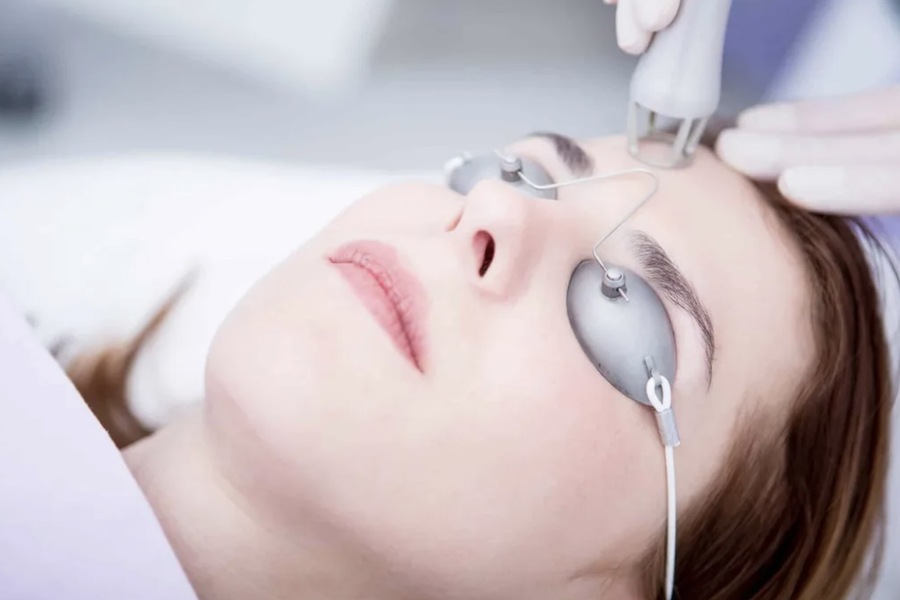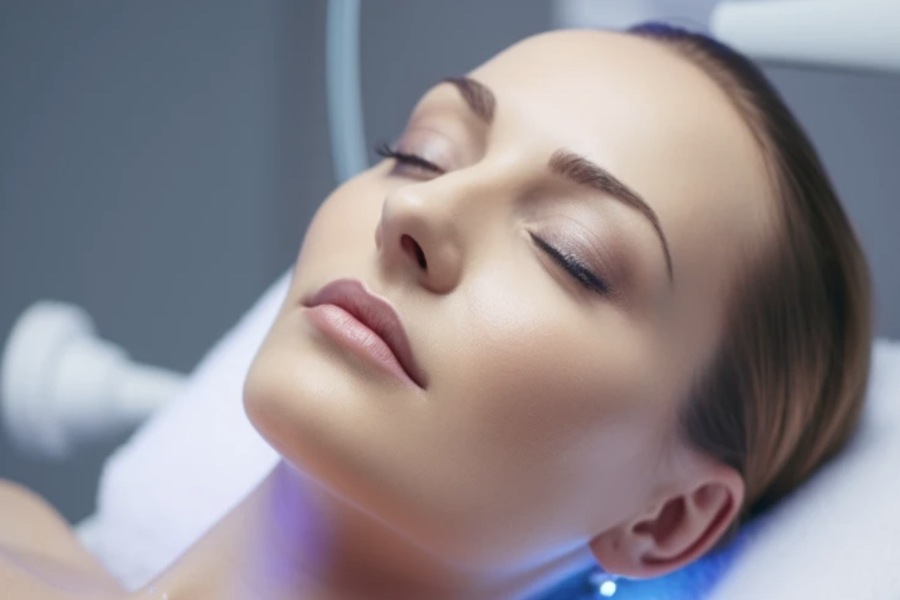The mechanism of CO2 laser skin rejuvenation lies in its ability to precisely control heat delivery to the skin. If you’re searching for a skin clinic near me, this advanced technology is often offered by top professionals in your area. The laser’s energy targets water molecules in the skin, leading to rapid heating and vaporization of damaged cells. This controlled damage prompts the body’s natural healing process, encouraging the production of new skin cells and stimulating fibroblasts to create fresh collagen and elastin.
Collagen and elastin are the structural proteins responsible for the skin’s firmness and elasticity. Over time, the body’s production of these proteins declines, resulting in wrinkles, sagging, and dullness. By reigniting this production, CO2 laser treatments help reverse visible signs of aging and restore a youthful, vibrant appearance.
Fractional CO2 Laser Technology: A Game-Changer in Dermatology
The introduction of fractional CO2 laser technology revolutionized skin resurfacing by improving safety and reducing downtime. Traditional CO2 lasers treated the skin in a continuous manner, which could cause significant damage to the surface and extend recovery time. Fractional lasers, on the other hand, treat only a fraction of the skin at a time, leaving healthy, untreated areas to accelerate healing.
This approach works by dividing the laser beam into thousands of microscopic columns, creating tiny zones of controlled thermal damage surrounded by intact tissue. This innovation enables:
Quicker Healing: Healthy cells in untreated areas help regenerate the skin faster.
Reduced Side Effects: Fractional treatment minimizes redness, swelling, and discomfort compared to traditional methods.
Customizable Intensity: The dermatologist can adjust the laser’s settings to target superficial or deep layers of skin, depending on the patient’s needs.
Comprehensive Preparation for CO2 Laser Treatment
Proper preparation is essential to ensure the safety and effectiveness of the procedure. Patients are advised to follow these preparatory steps:
- Consultation and Skin Assessment
The initial consultation helps identify the patient’s skin type, specific concerns, and suitability for the procedure. A patch test may be conducted to check for any adverse reactions.
- Avoiding Sun Exposure
Patients should avoid direct sunlight and tanning beds for at least two weeks before the treatment, as sun-damaged skin is more prone to complications.
- Pre-Treatment Medications
Depending on the patient’s history, antiviral or antibiotic medications may be prescribed to prevent infections. Individuals prone to cold sores are often prescribed antivirals to prevent outbreaks.
- Skincare Adjustments
Retinoids, exfoliants, and other potentially irritating skincare products should be discontinued at least one week before the procedure.
- Smoking Cessation
Smoking adversely affects the skin’s ability to heal. Patients are encouraged to quit smoking several weeks before and after the treatment.
The Procedure in Detail
During the procedure, the dermatologist uses a handheld device to deliver precise laser energy to the targeted areas. Each pass of the laser focuses on specific skin layers, allowing the practitioner to customize the depth and intensity of the treatment. Multiple passes may be performed to achieve optimal results.

Advanced Features of Modern CO2 Laser Systems
Cooling Technology: Built-in cooling systems reduce heat-related discomfort during the procedure.
Enhanced Control: Adjustable settings ensure precise targeting of wrinkles, scars, and pigmentation.
Real-Time Feedback: Advanced machines monitor skin responses to maintain safety and effectiveness.
Post-Treatment Healing and Skin Care
The recovery process is a vital component of CO2 laser rejuvenation. While initial redness, swelling, and mild peeling are expected, proper care ensures optimal healing and long-lasting results. Key post-treatment care guidelines include:
- Hydration and Moisturization
Regularly applying doctor-recommended moisturizers helps soothe the skin and maintain its hydration.
- Avoiding Harsh Products
Skincare products containing alcohol, fragrances, or active ingredients like retinolshould be avoided during the recovery period.
- Sun Protection
Sunscreen with a minimum SPF of 30 is mandatory to shield the skin from harmful UV rays, which can worsen redness and compromise results.
- Gentle Cleansing
Washing the face with lukewarm water and a gentle, non-abrasive cleanser helps maintain cleanliness without irritating sensitive skin.
- Avoiding Makeup
Patients should avoid wearing makeup for at least one week post-procedure to prevent clogging pores and disrupting healing.
Longevity of Results and Maintenance Treatments
One of the most appealing aspects of CO2 laser skin rejuvenation is its long-lasting results. Patients often notice visible improvements within a few weeks, but the final results become evident after 4–6 months as collagen remodeling reaches its peak.
To maintain the rejuvenating effects, patients are encouraged to:
-Schedule maintenance treatments every 12–24 months, depending on the skin’s response and aging process.
-Maintain a healthy lifestyle with balanced nutrition and hydration.
-Use high-quality skincare products tailored to their specific needs.
Comparing CO2 Laser Rejuvenation with Other Skin Treatments
CO2 laser rejuvenation stands out due to its versatility and effectiveness, but it is important to understand how it compares with other procedures:
- Chemical Peels
While chemical peels also exfoliate and renew the skin, they lack the precision and depth control of CO2 lasers. Peels are generally suitable for mild to moderate concerns, whereas lasers address deeper wrinkles and scars.
- Microneedling
Microneedling stimulates collagen production through tiny punctures in the skin, but its effects are more superficial compared to CO2 lasers.
- Radiofrequency Treatments
Radiofrequency (RF) devices use heat to tighten skin and stimulate collagen. RF treatments are non-invasive but may not provide the dramatic results achievable with CO2 laser therapy.
- IPL (Intense Pulsed Light)
IPL targets pigmentation issues and redness but does not offer the comprehensive skin renewal provided by CO2 lasers.

Safety Measures and Common Concerns
CO2 laser skin rejuvenation is considered safe when performed by trained professionals. However, patients should be aware of the following:
Possible Side Effects: Redness, swelling, and temporary hyperpigmentation may occur but are typically short-lived.
Risk of Complications: Rare complications, such as infection or scarring, can arise if post-care instructions are not followed.
The Future of CO2 Laser Technology
Continuous advancements in laser technology promise even more effective and comfortable treatments. Emerging innovations include:
AI-Driven Customization: Artificial intelligence may help fine-tune laser settings for individual skin profiles.
Combination Therapies: Integrating CO2 lasers with other treatments like PRP (Platelet-Rich Plasma) enhances outcomes by combining regenerative effects.
Minimally Invasive Techniques: Newer fractional systems aim to deliver the same benefits with virtually no downtime.
Final Thoughts
CO2 laser skin rejuvenation is a transformative solution for individuals seeking to restore their skin’s youthful vitality and address a wide range of concerns. Whether you aim to reduce wrinkles, fade scars, or enhance overall skin texture, this procedure offers scientifically backed results with minimal risks. By partnering with a skilled dermatologist and committing to post-procedure care, patients can unlock the full potential of their skin and enjoy long-lasting benefits.

Hiking addict, mother of 3, record lover, Eames fan and brand builder. Performing at the crossroads of art and function to give life to your brand. Let’s make every day A RAZZLE-DAZZLE MUSICAL.
